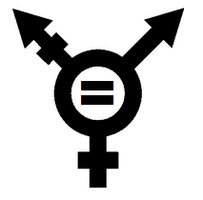Coming Out as Transgender and Dyslexic in Corporate India
Indira is a transwoman who had initiated her personal and social transition process about four years ago and got her gender and name changed last year, in 2014. Indira also happens to be dyslexic and, by virtue of this learning disability, has her own set of strengths and inadequacies.
Indira has been out as a queer person since she was 20. However, she was not out to herself as a transwoman back then, identifying as a gay man for a long time. She began her professional career with the India operations of a Wall Street giant ‘X’. During her six years at X, Indira was open and out as a gay man with her employer. She did not have the need to inform them that she was dyslexic, as the role leveraged her strengths and didn’t put her inadequacies to test.
Indira was recognized with awards for high performance every year of her time at X.
She then moved to company Y. During the next six years, Indira was open and out as a gay man to her employer at Y as well. It was over these years that Indira began questioning her gender and gender identity, and came to terms with her disability. In June 2014, Indira was rehired by company X. Over the next six months Indira would be at the receiving end of the company’s violation of the mandate of the NALSA vs. Union of India judgement (hereafter, NALSA judgement) where the Supreme Court laid down that SRS should not be a prerequisite for gender change as gender transcends the body and cannot be reduced to the presence of an organ or the absence of it. The company also violated its own disability policy that mandates that differently-abled people be offered roles in consonance with their skills and strengths. This essay documents the challenges faced by Indira since her coming out as trans and dyslexic.
The First Week
Late in March 2014, Indira received a call that informed her of a role in her former employer X. The job description (JD) emailed to Indira detailed that the role she was being considered for was a ‘high logic’ role in need of a person with ‘investigative problem solving’ skills and ‘out-of-the-box’ thinking. The JD laid down the need for very strong logical and analytical skills in the candidate and Indira was an excellent fit. She was immediately hired after a battery of aptitude and psychometric tests. Almost immediately, Indira received an offer, and in less than a week she had landed the job. It is widely believed that a corporate does not rehire an ex-employee unless it is very clear and convinced about the value proposition that he/she would bring to the table.
Indira joined X in the first week of June. Her on-boarding was rushed and was completed in just 1.5 hours. She was made to board a flight to Mumbai on an assignment the very same day. Consequently, Indira’s full-fledged three–day long induction was deferred for 6 months. And, no bank account was set up.
Indira did not come out to her employer as a transwoman during hiring, for fear of an adverse hiring bias that may have no bearing whatsoever on her competence or merit. No law or organizational policy mandates that candidates reveal either their gender identity or sexuality at the time of hiring. Candidates may choose to disclose it if they wish to. Also, during the time of hiring, Indira had applied for gender- and name-change documents through an affidavit. Within a week of her joining work at X, she obtained her papers formalising these changes. Immediately, Indira came out to her manager and the functional head as a transgender woman. She submitted the papers and stated that she wanted her new name and gender to be reflected in all her records, emails, business cards and HR and business databases. She also sought access to either a women’s restroom or a gender-neutral restroom. Indira also informed her manager that her induction was pending and hence all other joining formalities were undone too. He listened and assured her that it would be done and that she will be nominated for it in some time. He did not specify a timeline, and instead put her on to the HR person. Indira also came out to the HR as a transgender woman. In a follow-up email to the HR and her functional head, Indira flagged four key concerns:
1. The training on prevention of sexual harassment at X is obsolete as it does not take transgender people and the NALSA 2014 judgement into cognizance. This is a grave concern: inaction makes the organization strategically complicit in the invisibilization of transgenders, in allowing practices deleterious to their wellbeing at the workplace. It is also violative of the NALSA judgement.
2. Her discomfort in accessing the men’s restroom and need to access either the ladies restroom or at least a gender-neutral restroom in line with the NALSA judgment. She felt sexually harassed on being forced to used the men’s restroom.
3. Her complete discomfort with being addressed Inder or the use of male personal pronouns, such as ‘he’ or ‘his’. She stated that mis-gendering when read with NALSA the judgement clearly constitutes sexual harassment. She also told them that as per both the statute and X’s policies all sexual harassment complaints need to take impact as stated by the complainant into immediate cognizance. She reminded them of the thumb rule of impact vs. intention applied in the Vishakha guidelines of the Supreme Court and the new law Prevention, Prohibition and Redressal of Sexual Harassment of Women at Workplace Act, 2013.
4. Her non-induction till date and consequent incompletion of all induction formalities.
Indira attached her non-SRS gender- and name-change papers with this email. The HR questioned her as to why she didn’t reveal her trans identity at the time of hiring. Indira explained that her coming out was legally unwarranted. He addressed her as Inder despite her telling him that she is not Inder but Indira. Since he was clearly unaware of the NALSA judgement, the HR person was not able to advise Indira. He asked for some time and told her that as she was in a critical stage of a high priority project, she would need to wait to get released to get inducted. This email and this week in June was the first in a seven-month long fight against employment discrimination and organizational opacity.
The First Month
Indira began her assignment—a training and immersion programme with the client in Mumbai—that was meant to go on for 1–1.5 months. Near the last week of June, Indira reminded her managers and the HR, both verbally and on email, of her non-induction and of her trans identity for change of name and gender formalities.
In the meanwhile, another issue had popped up at work. The job-on-the-floor was completely different from what was communicated to her during hiring in the JD. It was, instead, a high precision job, demanding critical business decision-making in one reading, and within a timeline of 15–20 minutes; a dyslexic’s nightmare. Indira informed her manager, the functional head and the HR person of her dyslexia and the wrong fitment into this role. She explained at length that dyslexia is a statutory learning disability covered in X’s own disability policy. She followed this up on email by attaching her dyslexia certificates from two leading private hospitals, viz. Apollo and Medanta, and two leading government hospitals, viz. Institute of Behaviour and Allied Sciences and Vidyasagar Institute of Mental Health and Neurosciences, Delhi.
Indira was asked by the HR as to why she did not reveal her condition of dyslexia at the time of hiring. She responded that she was never asked if she was dyslexic either verbally or in writing. She highlighted that the JD sent to her showed no bearing that her dyslexia could possibly have on the role that she was being hired for. She also highlighted that the key information on the role was misrepresented and withheld by the employer who shared a flawed JD and skewed her understanding of the role. There was a clear and total JD vs. job-on-the-floor mismatch; this was not an L&D (Learning and Development) job, but an operational training role. Indira received a standard response on email from the HR person that her concerns were being considered, while he continued to address her as Inder.
Three Months, Two Reminders and One Escalation
In July, Indira requested her functional head and the HR for a resolution to all the above issues she had raised. She received no response to her email other than an out-dated Out of Office reply. Indira received an email from the HR in the end of July that she needs to submit her Sexual Reassignment Surgery (SRS) certificate for gender change. Indira immediately responded that insisting on SRS as a prerequisite for gender change is violative of the NALSA judgement. She did not receive a response. One month later, in September, Indira writes again to all highlighting that insistence on SRS as a prerequisite for gender change is violative of the NALSA judgement. She reminded her manager and the HR of her request for a resolution to all the issues raised. Four months down, Indira was still in Mumbai, hadn’t been inducted yet, bank account formalities were not done and salary unpaid.
By the last week of September, Indira escalated the issue to the General Manager (HR). However, that did not yield any results either. Her HR personnel responded instead, informing Indira that that there were no provisions in X’s India policies to change her name and gender. She wrote back explaining that it was not in line with the NALSA judgement and sends her the gender- and name-change documents again. She also drew attention to his email that it didn’t address the other issues she had raised, viz. statutory protection for dyslexics at work under the company’s policy, JD vs. job-on-the-floor mismatch, non-induction and incompletion of induction formalities.
Reaching the Ombudsperson
The ensuing reply from the HR personnel still addressed Indira as Inder and simply repeated that there were no such policies at X in India. Indira reminded him of X’s global policy, explaining that the global policies on ‘Respecting the individual and Diversity and Inclusion’ have a provision for it. The HR dismissed it as not being applicable in India. It was the end of October and the GM (HR) intervened for the first time, adding a one-liner that Indira should submit her sex re-assignment surgery (SRS) certificate. Indira was still in Mumbai after her first assignment of 1–1.5 months gets extended to 6 months.
In the first week of December, Indira received her confirmation letter. Now, she raised the same issues in the confirmation meeting with her manager and the HR and followed it up with an email. Indira was coaxed and cajoled verbally to stay calm as she is doing very well for herself and shouldn’t insist on a role change. They skirted the issue of her trans identity, name and gender change, access to gender neutral restroom, role change and other issues. Her subsequent escalation of this concern to the GM (HR) did not yield any result. Instead, she received an email from her functional head and the HR person complimenting her work in the project. The mail explained she was a strong resource, greatly needed, and that she could not have a role change. Her manager had also written in reiterating that she should submit an SRS certificate. This email had an undeleted comment in email exchanges between her manager and the HR personnel casting aspersions on her trans identity and questioning the veracity of her dyslexia. It must be remembered that she had submitted, well in time, all gender- and name-change documents as evidence and her dyslexia certificates from leading private and government hospitals.
Following this Indira raised a complaint with the office of the Ombudsperson and the Global Diversity and Inclusion Head. She mentioned in her email that the escalation to the GM (HR) did not yield any results and that she had engaged enough and more with the business and HR leadership and that she had exhausted all options of redress in India. She reported the deliberate mis-gendering, wanton sexual harassment, persistent disability discrimination, employment discrimination and protracted non-payment of wages.
She attached all supporting documents, emails, follow up emails, incomplete responses from her manager and the HR personnel that showed the inherent discrimination, and flagged these as violative of X’s policy and the laws of the land. She explained that her case had a very high risk of litigation if not addressed internally and adequately within X.
Hearings and the Deliverance of Justice
The offices of the Ombudsperson, Global Diversity and Inclusion took cognizance of this complaint and scheduled the first hearing—with Indira and the defendents, her manager and the HR personnel—on 11th December 2014. On the day of the first hearing, Indira presented and defended her case with evidence before the joint committee of the Ombudsperson, Global Diversity and Inclusion. After the 2-hour sitting her manager and the HR personnel seek time to build their defence and show evidence. The case was adjourned for second hearing on 17th December 2014.
On 18th December 2014, the second hearing was summoned. Indira defended her case with all the above evidence, supporting emails, notarised affidavits and certificates. The defendants failed to present any evidence other that their own verbal submissions. They sought more time. The joint committee made oral and written observations and gave time up to 5th January 2015.
On 5th January 2015, the third hearing was summoned. The defendants yet again failed to present any evidence in the form of emails or their responses to Indira’s emails. Making oral submissions, they sought more time to gather evidence. The joint committee made scathing verbal and written remarks on file against the defendants and gave a final timeline not exceeding beyond 13th January 2015 for submission of evidence. The committee mandated that the decision would be announced on the 13th of January regardless of whether the defendants submit evidence or not.
On 13th January, the fourth hearing was summoned. The defendants failed to present any evidence other their own verbal submissions. The committee awarded a verdict. The committee held the defendants complicit in violating X’s policies on the following counts:
1. Disability discrimination under X’s Global Disability Policy. The committee upheld Indira’s right to a role change in line with her skills and the JD that was emailed to her at the time of hiring.
2. Deliberate mis-gendering both verbally and on email as Inder instead of Indira by company X’s India business leadership and India HR despite submission of all relevant and necessary supporting documents by her. The committee declared that such treatment of Indira by X India was violative of X’s HR policies and the NALSA judgement.
3. Sexual harassment of Indira by undermining her integrity on email with disparaging remarks; denial of access to a restroom of her chosen gender and coercing her to only use the men’s restroom; and, wantonly addressing her by the name and pronouns assigned to her at the time of her birth.
4. Insistence of SRS for gender change as violative of the NALSA judgement.
5. Discrimination and severe harassment for denial of pay, non-induction and for not setting up her bank account even after six and a half months of joining.
The committee awarded immediate release of Indira from the current role and instructed a role change within a timeline not exceeding 10 business days to a role in accordance with X’s JD and Indira’s skills, resume and her dyslexic condition. The committee ordered that Indira shall henceforth only be addressed as Indira and that she shall have access to restrooms of her chosen gender and that all records both online and otherwise should reflect Indira’s credentials by her chosen gender and name and that all the above changes need to completed within 10 business days ending on 27 January 2015.
This essay tries to bring to light the undercurrent of bias and stigma that operate invisibly against a certain disenfranchised and marginalised constituencies, in this case a dyslexic transgender person at the workplace. Besides, it reveals how disability, diversity and anti-sexual harassment policies that are meant to offer an equitable workplace and cover of protection are observed more in the breach than in compliance in the case of the differently-abled and the transgenders. Consequently, X tested Indira not on her skills, strengths or inadequacies but on her disability. It also underscores how the same person with the same set of skills and the same level of performance is treated very differently before and after gender change by the same employer.
P.S.: For confidentiality, names of all people—including Indira’s—have been changed, places have been changed and the name of her employer withheld.



